
How to Use NOR Flash Memory W25Q64: Examples, Pinouts, and Specs
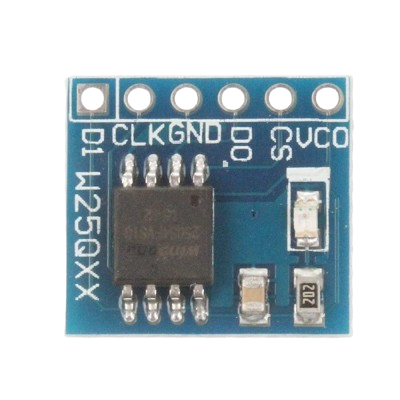
 Design with NOR Flash Memory W25Q64 in Cirkit Designer
Design with NOR Flash Memory W25Q64 in Cirkit DesignerIntroduction
The W25Q64 is a 64Mb (8MB) serial NOR Flash memory device designed for high-speed data transfer via an SPI (Serial Peripheral Interface) bus. It is widely used in embedded systems for storing firmware, boot code, and other critical data. The W25Q64 offers fast read speeds, low power consumption, and high reliability, making it an ideal choice for applications requiring non-volatile memory.
Explore Projects Built with NOR Flash Memory W25Q64
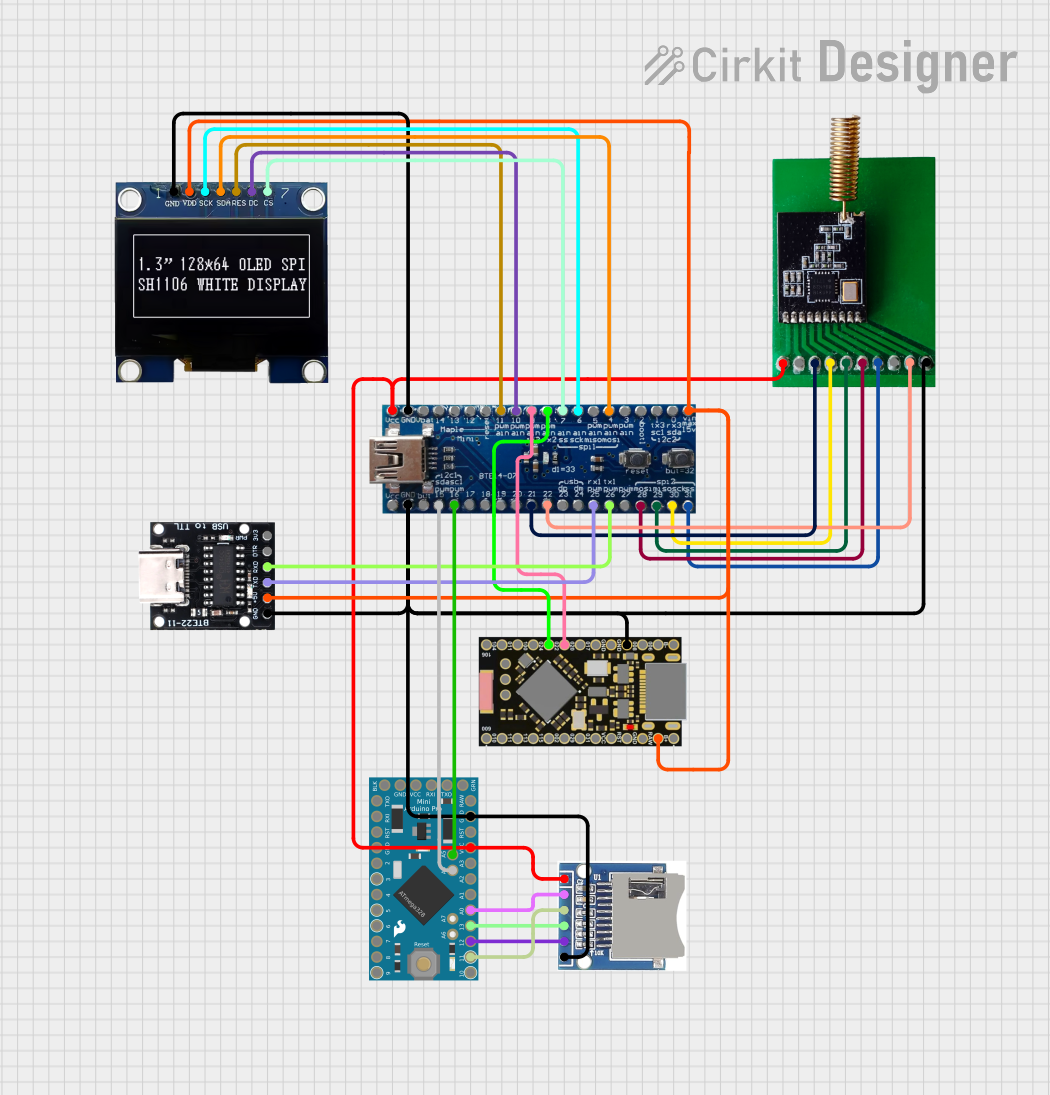
 Open Project in Cirkit Designer
Open Project in Cirkit Designer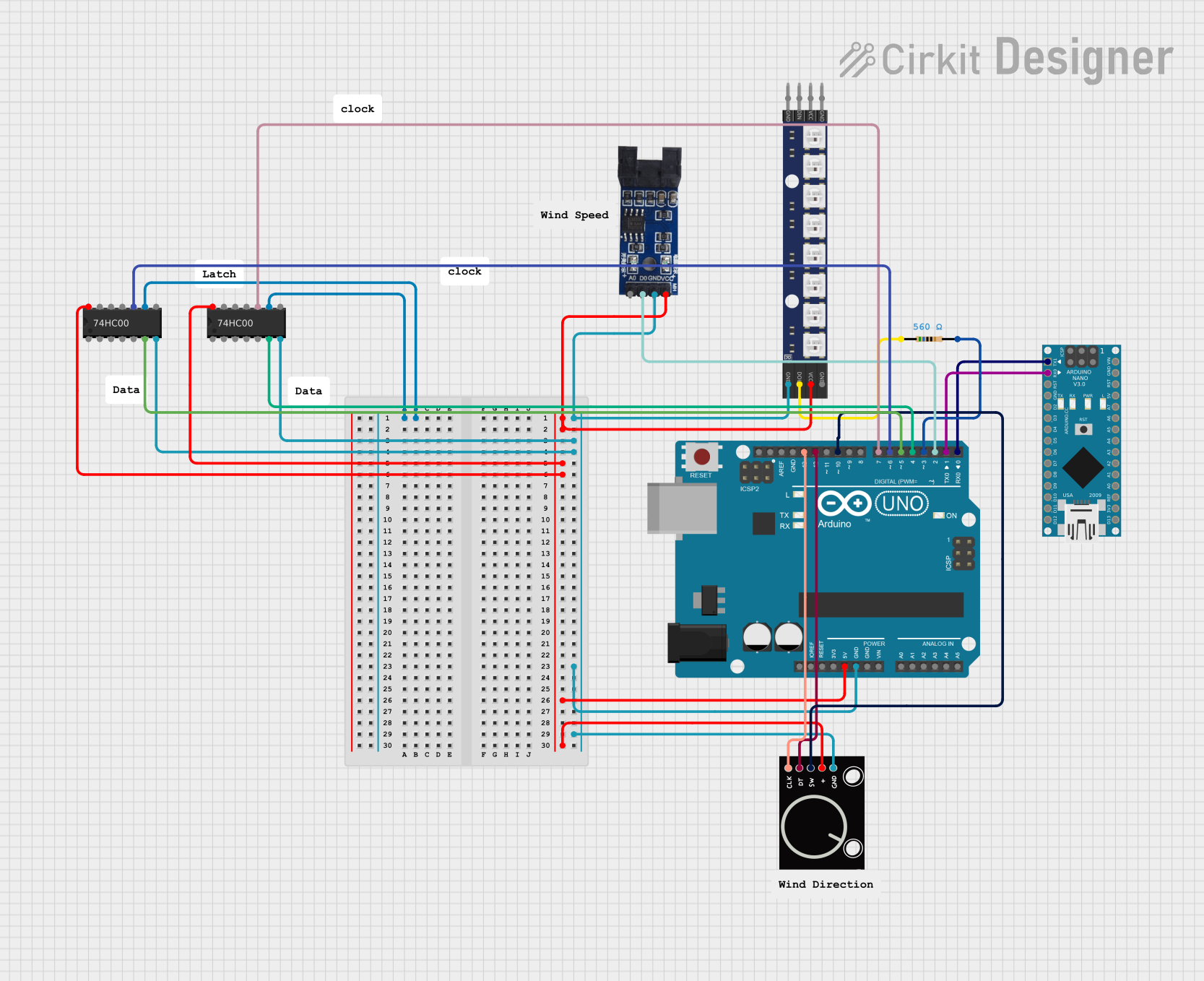
 Open Project in Cirkit Designer
Open Project in Cirkit Designer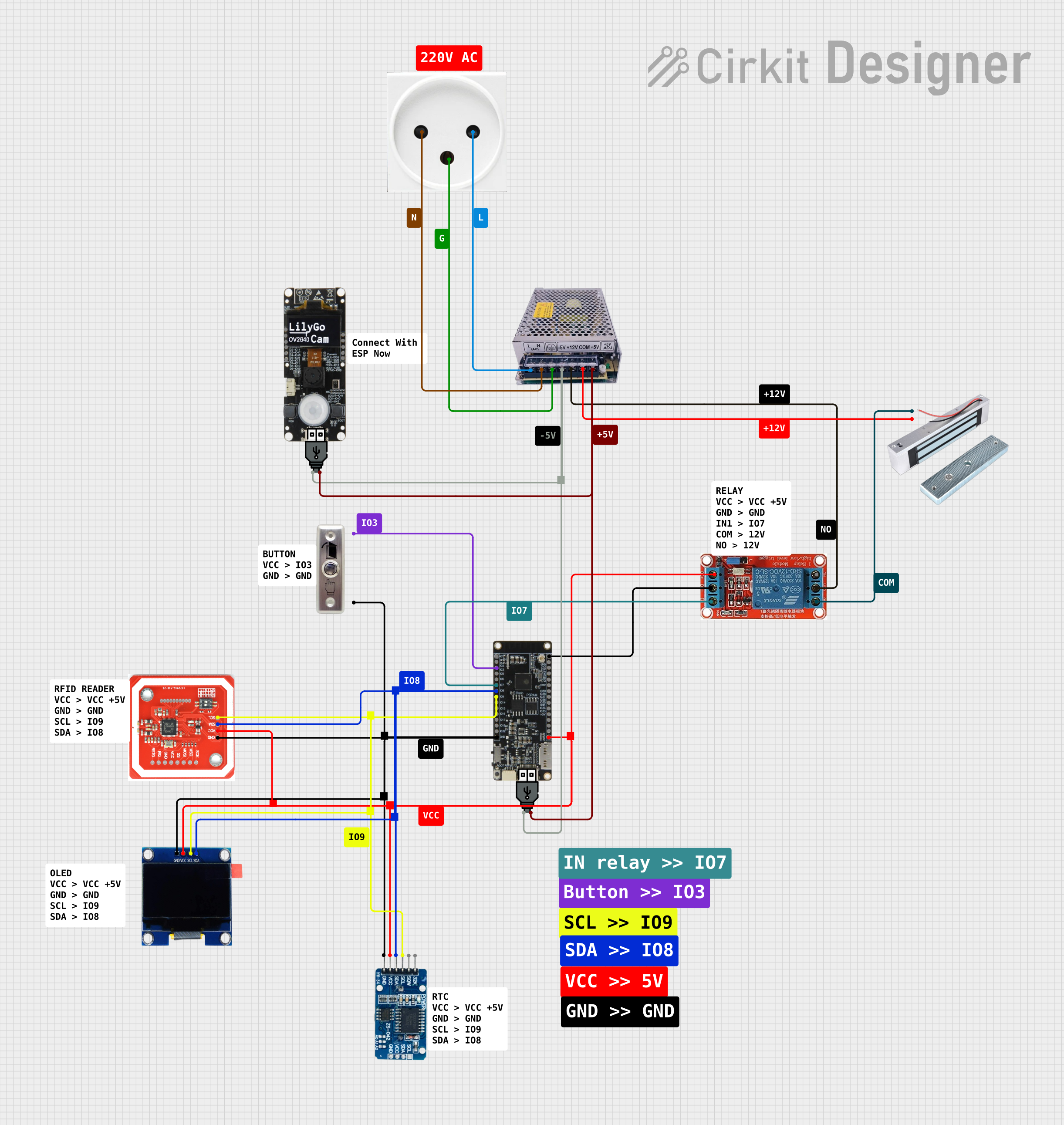
 Open Project in Cirkit Designer
Open Project in Cirkit Designer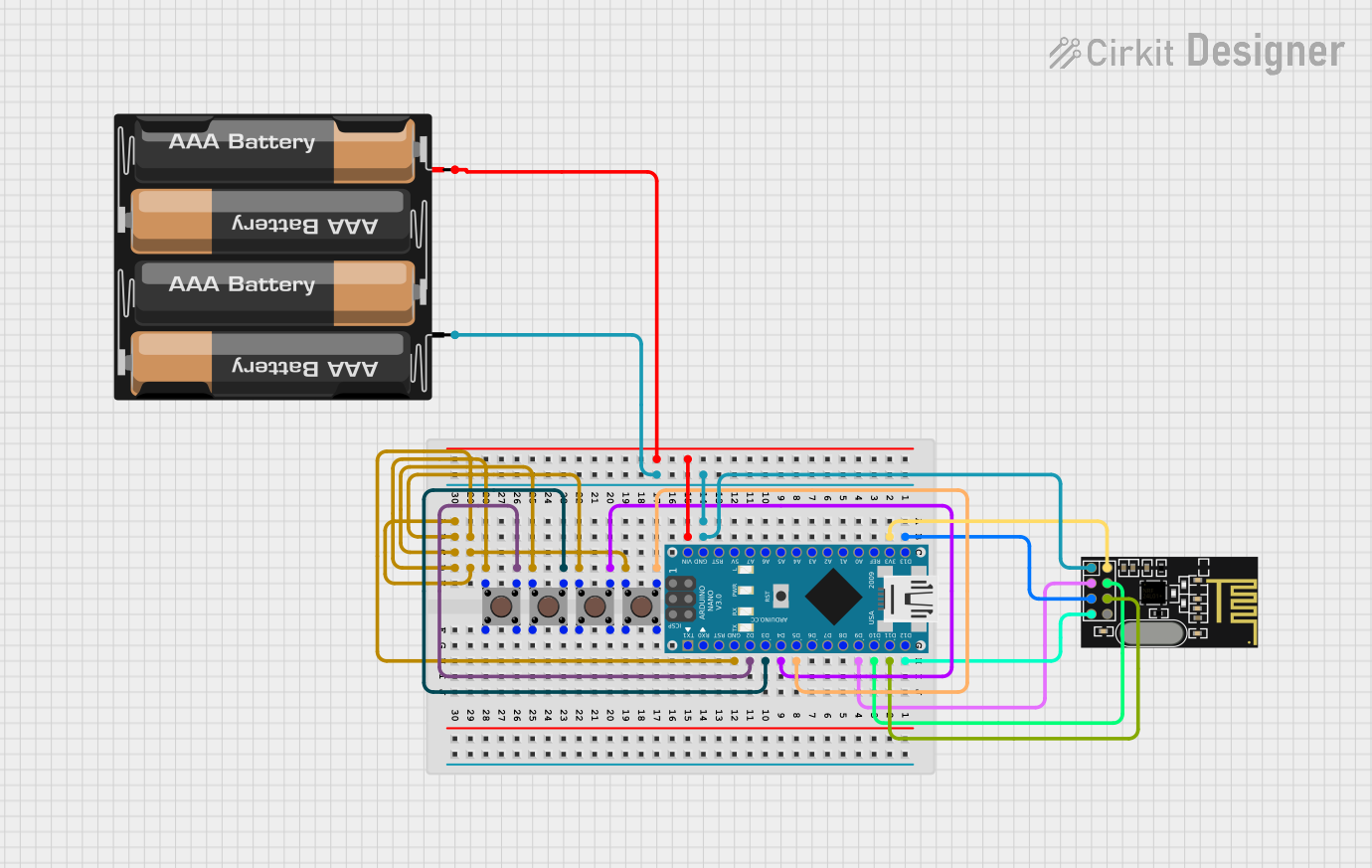
 Open Project in Cirkit Designer
Open Project in Cirkit DesignerExplore Projects Built with NOR Flash Memory W25Q64

 Open Project in Cirkit Designer
Open Project in Cirkit Designer
 Open Project in Cirkit Designer
Open Project in Cirkit Designer
 Open Project in Cirkit Designer
Open Project in Cirkit Designer
 Open Project in Cirkit Designer
Open Project in Cirkit DesignerCommon Applications and Use Cases
- Embedded systems for firmware and bootloader storage
- IoT devices for configuration and data logging
- Consumer electronics such as smart TVs, routers, and set-top boxes
- Automotive systems for code and data retention
- Industrial control systems requiring robust non-volatile memory
Technical Specifications
The W25Q64 is a high-performance NOR Flash memory device with the following key specifications:
| Parameter | Value |
|---|---|
| Memory Density | 64Mb (8MB) |
| Interface | SPI (Serial Peripheral Interface) |
| Operating Voltage | 2.7V to 3.6V |
| Maximum Clock Frequency | 104 MHz |
| Page Size | 256 bytes |
| Sector Size | 4KB |
| Block Size | 64KB |
| Erase Cycles | 100,000 cycles (typical) |
| Data Retention | 20 years |
| Operating Temperature Range | -40°C to +85°C |
Pin Configuration and Descriptions
The W25Q64 is typically available in an 8-pin SOIC package. Below is the pinout and description:
| Pin Number | Pin Name | Description |
|---|---|---|
| 1 | CS# | Chip Select (Active Low). Enables communication with the device. |
| 2 | DO (MISO) | Data Output (Master In Slave Out). Transfers data from the memory to the host. |
| 3 | WP# | Write Protect (Active Low). Protects specific memory regions from being written. |
| 4 | GND | Ground. Connect to system ground. |
| 5 | DI (MOSI) | Data Input (Master Out Slave In). Transfers data from the host to the memory. |
| 6 | CLK | Serial Clock. Synchronizes data transfer between the host and the memory. |
| 7 | HOLD# | Hold (Active Low). Pauses communication without deselecting the device. |
| 8 | VCC | Power Supply. Connect to a 2.7V to 3.6V source. |
Usage Instructions
How to Use the W25Q64 in a Circuit
- Power Supply: Connect the VCC pin to a 3.3V power source and the GND pin to ground.
- SPI Connections: Connect the SPI pins (CS#, CLK, DI, DO) to the corresponding SPI pins on your microcontroller or host device.
- Optional Pins:
- Connect WP# to VCC if write protection is not required.
- Connect HOLD# to VCC if the hold function is not needed.
- Pull-Up Resistors: Use pull-up resistors (typically 10kΩ) on the CS#, WP#, and HOLD# pins to ensure proper operation.
Important Considerations and Best Practices
- Voltage Levels: Ensure the operating voltage is within the specified range (2.7V to 3.6V).
- Clock Speed: Configure the SPI clock frequency to match the device's maximum supported speed (104 MHz).
- Erase Before Write: Always erase a sector or block before writing new data to it.
- Data Retention: Store critical data in sectors with minimal write/erase cycles to maximize data retention.
- ESD Protection: Use proper ESD protection measures to prevent damage to the device.
Example: Interfacing W25Q64 with Arduino UNO
Below is an example of how to interface the W25Q64 with an Arduino UNO using the SPI library:
#include <SPI.h>
// Define SPI pins for the W25Q64
#define CS_PIN 10 // Chip Select pin connected to Arduino pin 10
void setup() {
// Initialize Serial Monitor for debugging
Serial.begin(9600);
// Set up SPI pins
pinMode(CS_PIN, OUTPUT);
digitalWrite(CS_PIN, HIGH); // Deselect the W25Q64
// Initialize SPI
SPI.begin();
SPI.setClockDivider(SPI_CLOCK_DIV2); // Set SPI clock speed
SPI.setDataMode(SPI_MODE0); // Set SPI mode (Mode 0)
Serial.println("W25Q64 Initialized");
}
void loop() {
// Example: Read Manufacturer ID
digitalWrite(CS_PIN, LOW); // Select the W25Q64
SPI.transfer(0x90); // Send "Read Manufacturer/Device ID" command
SPI.transfer(0x00); // Send dummy bytes as per datasheet
SPI.transfer(0x00);
SPI.transfer(0x00);
byte manufacturerID = SPI.transfer(0x00); // Read Manufacturer ID
byte deviceID = SPI.transfer(0x00); // Read Device ID
digitalWrite(CS_PIN, HIGH); // Deselect the W25Q64
// Print IDs to Serial Monitor
Serial.print("Manufacturer ID: 0x");
Serial.println(manufacturerID, HEX);
Serial.print("Device ID: 0x");
Serial.println(deviceID, HEX);
delay(1000); // Wait 1 second before repeating
}
Troubleshooting and FAQs
Common Issues and Solutions
Device Not Responding:
- Ensure the CS# pin is correctly toggled (LOW to select, HIGH to deselect).
- Verify SPI connections and ensure proper pin mapping.
Incorrect Data Read/Write:
- Check the SPI clock speed and mode. The W25Q64 operates in SPI Mode 0.
- Ensure the memory sector is erased before writing new data.
Write Protection Issues:
- Verify the WP# pin is connected to VCC if write protection is not required.
- Check the status register to ensure the write protection bits are configured correctly.
Data Corruption:
- Avoid power interruptions during write or erase operations.
- Use decoupling capacitors near the VCC pin to stabilize the power supply.
FAQs
Q: Can the W25Q64 operate at 5V?
A: No, the W25Q64 operates within a voltage range of 2.7V to 3.6V. Use a level shifter if interfacing with a 5V system.
Q: How do I erase the entire memory?
A: Use the "Chip Erase" command (0xC7) to erase the entire memory. Note that this operation may take several seconds.
Q: What is the difference between sector and block erase?
A: A sector erase (4KB) clears a smaller portion of memory, while a block erase (64KB) clears a larger portion. Use sector erase for finer control.
Q: How do I check if a write or erase operation is complete?
A: Read the status register and check the Write-In-Progress (WIP) bit. The operation is complete when WIP = 0.